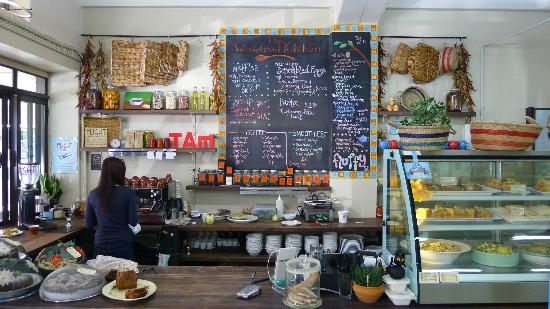Welcome to the Wholefood Kitchen: A Wholesome Guide for Parents
Hello, nourishing navigators!
Are you looking to transform your kitchen into a haven of healthful delights? Eager to introduce your family to the joys of whole foods? You’ve clicked on the perfect guide! Dive into our wholefood kitchen guide crafted with love, especially for parents desiring to make mealtimes not just healthy, but also utterly delicious.
What are Whole Foods?
Whole foods are ingredients that are as close to their natural state as possible – unrefined, unprocessed, and free from additives. They’re packed with nutrients, fiber, and health-boosting phytochemicals that help in nurturing a growing family’s needs. Think fresh fruits, vegetables, grains, nuts, and seeds; think vibrant, think vitality!
Benefits of a Wholefood Kitchen
Embracing whole foods can have a monumental impact on your family’s health. From boosting energy levels to enhancing overall wellness, the perks are aplenty. Here’s a quick bite of the benefits:
- Improved digestion and nutrient absorption
- Better weight management
- Enhanced immune function
- Lower risk of chronic diseases
Getting Started with a Wholefood Pantry
Transforming your kitchen starts with stocking your pantry with wholefood essentials. Let’s begin by clearing those shelves of processed foods and making room for wholesome goodness.
Here’s a quick checklist to jumpstart your wholefood pantry:
- Whole Grains: Quinoa, brown rice, whole oats
- Legumes: Lentils, chickpeas, black beans
- Nuts & Seeds: Almonds, chia seeds, flaxseeds
- Herbs & Spices: Turmeric, cinnamon, fresh basil
- Healthy Fats: Extra virgin olive oil, coconut oil, avocados
Wholefood Substitutions
Not sure how to replace processed ingredients with whole food alternatives? Worry not! Substitutions can be fun and easy. Here’s a simple swap guide:
| Processed Ingredient | Wholefood Substitute |
|---|---|
| White Sugar | Maple syrup, raw honey |
| Table Salt | Sea salt, pink Himalayan salt |
| White Flour | Whole-wheat flour, almond flour |
Navigating Wholefood Recipes
One of the most exciting parts of having a wholefood kitchen is exploring a plethora of family-friendly recipes. Here are a couple of key tips:
- Start simple with recipes that require minimal wholefood ingredients.
- Involve your kids in meal planning and preparation – make it a family affair!
- Be creative and don’t be afraid to tweak recipes to suit your family’s taste preferences.
Incorporating Wholefoods into Daily Meals
Integrating wholefoods into your family’s diet doesn’t have to be an overnight makeover. Gradual swaps and conscious meal planning can make the transition seamless and stress-free.

Five Essentials for Preparing Your Wholefood Kitchen
As you set sail on this wholesome journey, there are a few key things every parent should know:
-
Knowledge is Power:
Take some time to educate yourself and your family about the benefits of whole foods. Understanding the ‘why’ behind the food can help foster a lifelong appreciation for healthy choices. -
Planning is Essential:
Meal planning is a cornerstone of wholefood living. By knowing what’s on the menu, you can shop accordingly, reduce waste, and avoid the temptation of less healthy options. -
Equip Your Kitchen:
Invest in quality kitchen tools that make working with wholefoods easier – a good set of knives, a powerful blender, and a variety of pots and pans. -
Embrace Batch Cooking:
Cooking in larger quantities can save you time throughout the week. Batch cooking grains, legumes, and roasted veggies can be a huge time saver. -
Patience with Picky Eaters:
Introduce new foods slowly and don’t be discouraged if your child is hesitant at first. Keep offering a variety of wholefood options without pressure.
Wholefood Breakfasts for Champions
Start the day off strong with nutrient-packed breakfast choices. Here are a few ideas to get your day started:
- Oatmeal with fresh fruits, nuts, and a drizzle of maple syrup
- Smoothies with spinach, banana, and your choice of nut butter
- Whole grain pancakes topped with berries and Greek yogurt
Lively Wholefood Lunches
Lunchtime is an opportunity to refuel. Keep it colorful and full of variety:
- Quinoa salad with diced veggies, feta cheese, and a lemon vinaigrette
- Whole wheat wraps with hummus, grilled chicken, and an array of fresh veggies
- Sweet potato and black bean burritos – a hit with kids and adults alike!
Dinners to Gather Around
Dinner is the perfect time to come together as a family over a fulfilling meal:
- Grilled salmon with steamed broccoli and wild rice
- Lentil stew with whole-grain bread for dipping
- Stir-fried tofu with mixed vegetables over brown rice or quinoa
Satisfying Wholefood Snacks
Snacks are important to keep energy levels consistent. Offer healthy, wholefood snacks like:
- Apple slices with almond butter
- Homemade trail mix with nuts, seeds, and unsweetened dried fruit
- Carrot sticks and cucumber with hummus for dipping
Engaging Children in the Wholefood Lifestyle
Get children involved by letting them pick out whole foods at the market, helping with meal prep, or by growing a small herb or vegetable garden together. When children feel invested in what they eat, they’re more likely to enjoy it!
Maintaining the Wholefood Lifestyle & Avoiding Pitfalls
Remain flexible. If you have a day where things don’t go as planned, that’s okay! Avoid being too rigid – balance is key. Lastly, don’t consider any food ‘off-limits’ which can lead to a feeling of deprivation. Instead, focus on abundance and the delicious, healthy options you are adding into your life.
See more great Things to Do with Kids in New Zealand here. For more information see here
Disclaimer
The articles available via our website provide general information only and we strongly urge readers to exercise caution and conduct their own thorough research and fact-checking. The information presented should not be taken as absolute truth, and, to the maximum extent permitted by law, we will not be held liable for any inaccuracies or errors in the content. It is essential for individuals to independently verify and validate the information before making any decisions or taking any actions based on the articles.




